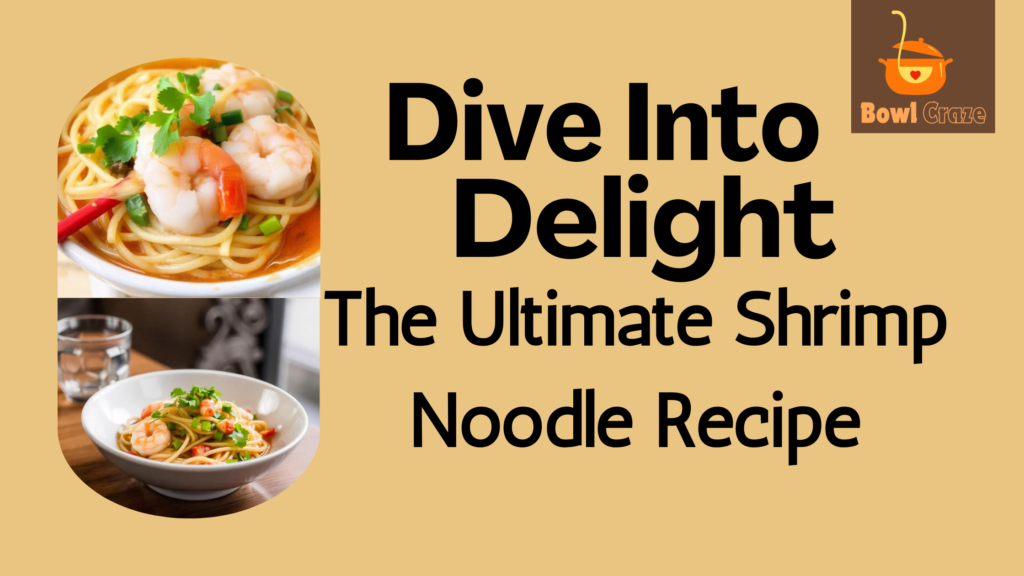Table of Contents
Introduction

Shrimp dumplings are a culinary delight that captures the sea’s vibrancy of flavors and the traditional cook’s plenitude. These small packets, usually to be found in dim sum restaurants, are much more than something just to put in one’s mouth; they are immeasurably rich cultural heritage that made people. The clear plastic skins surrounding a succulent filling, shrimp has been a feast loved in every corner of this earth. Whether received as a snack, or whether received as a showpiece in a party, there is little question about their lure.
In this all-in guide, we take that special ingredient that makes shrimp dumplings outstanding and guide you through the step-by-step process of preparing an exquisite dish that will enable you to cook it exceptionally well. Your family and friends are going to be amazed by your cooking skills and fun dining experience when you come up with the charm of the shrimp dumplings.
What Makes Shrimp Dumplings Special?
Flavor Profile: The Perfect Blend of Seafood
The shrimp dumplings flavor profile, in frank words, is simply marvelous for seafood. Fresh shrimp has that subtle sweetness marrying very well with aromatic ingredients. Shrimp becomes tender in one way but a little firm once cooked to provide this delightful bite. It is within the seasoning that the magic lies: a proper balance of fresh ginger, garlic, and green onions that can introduce depth and complexity with a hit of soy sauce and sesame oil to amplify natural flavors. Such harmonic distribution makes the recipe a masterpiece not only to taste but also to see, as pleasing as it will attract young and old food lovers to the dish.
Cultural Significance: A Staple in Dim Sum Cuisine
Shrimp dumplings are one of the staple dishes associated with dim sum food that has its origins in southern China. Dim sum is one of those signature Cantonese foods served for an afternoon tea service during which many dishes are shared between the people eating. Dim sum is supposed to transcend the parameters of a meal and encourage people sitting at the table to share with and connect. Shrimp dumplings, or “har gow,” have often been considered the epitome of excellence in Chinese food preparation.
More than anything, their delicate, translucent wrapper has to be executed precisely so the filling inside tastes great and does not tear. This reality emphasizes the fact that grand detail focuses on even tiny things in Chinese food and narrates well-established cultural traditions regarding food.
Essential Ingredients for Perfect Shrimp Dumplings
Fresh Shrimp: Choosing the Best Quality
Fresh, high-quality shrimp make the best stuffing for these dumplings. Shrimp should be firm and translucent-looking with just a hint of ocean smell. For optimal flavor, go wild-caught on that shrimp, rather than farmed.
- Size: Medium to large (about 26/30 count) is best for dumplings.
- Freshness: Fresh shrimps must be kept on ice while frozen shrimps must be flash-frozen with no additives.
- Shell and Tail: Shrimps are preferably with the shell still on, to be an ideal estimation of freshness.
Dumpling Wrappers: Store-Bought vs. Homemade
While fun to make from scratch, most home cooks do not have the time or prefer the convenience of store-bought. To make your own, you mix flour and water to a smooth dough. These days, high-quality pre-made is very easily found anywhere in most grocery stores and Asian markets. Here are some pointers when choosing wrappers:
- Thickness: Thin wrappers should be used in case one wants to eat small snacks. At a point of thickness, the wrapper is chewy to chew.
- Shape: Shrimp dumplings are rounded in shape but can be square.
Complementary Ingredients: Aromatics and Seasonings
The aromatic ingredients you will use will greatly influence the flavor of your shrimp dumplings. You could use fresh ginger and garlic to bring warmth and brightness to your fillings with a green onion for some refreshing crunch.
- Soy Sauce: This salty and umami flavor gives the fillings.
- Sesame Oil: This adds richness and nutty flavors to the shrimp fillings.
- White Pepper: This is the subtle seasoning that one adds yet does not overpower the dish.
Step-by-Step Guide to Making Shrimp Dumplings
Preparing the Shrimp Filling
- Chop the Shrimp: Peel and devein a shrimp. Rinse them under cold running water; blot dry with paper towels. Chop half of the shrimp into fine pieces; leave the other half whole for added texture.
- Ingredients: Shrimp, Chopped, Whole. Sauté shrimp; peel and pulp garlic, grate ginger, and slice the green onion into thin pieces ahead. Mix with a fork or even by hand gently in a bowl: chopped shrimp, whole shrimp, minced garlic, grated ginger, fine slices of green onion, soy sauce, sesame oil, and white pepper.
- Taste Test: Best tasting before wrapping. Scoop a small amount in a pan and stir-fry until the shrimp becomes opaque. Season according to taste. This way, it will be best when wrapped.
Crafting the Perfect Dumpling Wrapper
- Prepare the Dough (if making it from scratch): To the mixture in the same bowl add 2 cups of all-purpose flour and 3/4 cup of boiling water, stirring to blend. Mix to form a rough dough and then upon the dough being rather stiff, knead on a surface sprinkled with Meyers plump flour for about 10 minutes to make it smooth and elastic. After this use a damp cloth to cover the dough and allow it to rise for not less than 30 minutes.
- Roll Out the Dough: After resting, take small parts of the dough and make it the size of a golf ball. Now, unroll each portion with the rolling pin to make a circle recipe that should be about 3 inches in diameter. This will allow you to have an even thickness that will help everything cook properly and at the same time.
Assembling Shrimp Dumplings: Tips for Success
- Fill the Wrappers: Put a spoonful of filling in the middle of the wrapper. Do not stuff them up too tight in case they might open up in the course of cooking and leak everywhere.
- Seal the Dumplings: Package the Potstickers Soak the wrapper edges in water. This will make the wrapper stick when you seal it. Overlap the wrapper to enclose the filling and squeeze out all the air bubbles. Use your fingers to pinch the edges closed to seal the package closed. Fold and pinch each pleat along the top edge, adding them up to give it a real look.
- Arrange for Cooking: Place the prepared dumplings ready for steaming or pan-frying in a floured area or on a parchment-lined plate, so they don’t stick together while you prepare them to be steamed or pan-fried.
Cooking Methods: Steaming vs. Pan-Frying
- Steaming: It has been observed that the traditional preparation method for shrimp dumplings is mostly through steaming. Place the dumplings in the lined bamboo steamer allowing no two dumplings to be touching from one another and cover it with parchment paper. There is a suggestion that they should be steamed over boiling water for about 6-8 minutes or until the shrimp has been cooked fully and the wrappers become transparent.
- Pan-Frying: If you want a crispy texture, pan-fry the dumplings. Use a non-stick skillet over medium heat with a tablespoon of vegetable oil. Place the dumplings in the pan cook the bottom for about 2-3 minutes and let it get golden brown. Pour a little water into the pan being careful of splatters, cover, then steam for another 5-7 minutes for about its full-cooked time.
Check Out: Pot Pie Soup Recipe – Recipe#01.
Serving Suggestions for Shrimp Dumplings

Ideal Dipping Sauces
A good dipping sauce will surely take the shrimp dumplings to new heights. So, here go a few of the classics and some creative ones that I like,
- Soy Sauce and Vinegar: Equal parts soy sauce and rice vinegar for that simple, tangy dip. Add a few drops of sesame oil for an extra kick.
- Chili Oil: That spicy kick can be indulged in the soy sauce sauce by drowning in some chili oil.
- Peanut Sauce: A Peanut Sauce made with peanut butter, soy sauce, lime juice, and just a hint of honey, is richly nutty and divine with shrimp dumplings.
Pairing with Sides: A Complete Meal
Serve it as a main, or as a combination with the side dishes below. Some great combinations:
Stir-fried greens:
- Stir-Fried Greens: Stir-frying lightly in the pan bok choy or kale with garlic will introduce great contrasting flavors to this dish.
- Jasmine Rice: A portion of fluffy jasmine rice will be an amazing accompaniment in which to savor your dumplings and balance your meal.
- Light Soup: Light Soup clear broth or wonton soup would warm the dumplings and bring additional flavors to them.
Common Mistakes to Avoid When Making Shrimp Dumplings
Overfilling: Finding the Right Balance
It’s quite an error even to make: overfilling dumplings and so leaving them messy. You want to use about one tablespoon of filling per piece of dumpling. That way, you will have cooked the filling relatively evenly without spilling the fillings out and not tearing the wrapper. It’s better to err in not being underfilled than the opposite if uncertain.
Wrapper Issues: Preventing Sticking and Tears
Wrap the wrappers in a damp cloth so that they don’t stick to each other. The minute those wrappers dry up, they become brittle and so brittle that breaking them is easy. Your frying area must be floured or oiled lightly so it will not stick to what you are frying.
Conclusion
Shrimp Dumplings are not just a matter of freshness of ingredients but can be culturally well-linked. The occasion is celebrated, and a delicious experience is being gifted by itself with friends and family. Such an experience while making shrimp dumplings can prove rewarding for those who showcase mastery in culinary skills. The diverse flavors combined with texture will make the dish feel comforting yet impressive.
The more you begin to make dumplings, the more you should enjoy yourself. Try your hands at as many different kinds of variations of dumplings, testing as much flavor as you can. Whether steamed or pan-fried, you’ll have a pan full of appetizing shrimp dumplings to feed your friends and family.
For more details: Click Here.
FAQs About Shrimp Dumplings
Can I freeze shrimp dumplings?
Well, yes, and no. The shrimp dumplings can also be frozen rather well. Put them all in a single layer on a baking sheet and then cold them in the freezer until steady. You may then pack them in a zip-top plastic bag or something similar and freeze them for up to three months. Frozen dumplings are just in anticipation of being prepared-cooking. I must insist there is no prior cooking preparation required for frozen dumplings other than adding more time to cook the dumplings.
What’s the best way to reheat leftover dumplings?
The recommended method of reheating these dumplings is through steam since it will wet the least likely dry the product. Alternatively, you can pan-fry with a little water added to the pan and cover on top to steam. Do not microwave as it often ends up soggy.
How can I make shrimp dumplings gluten-free?
Then, you can have gluten-free shrimp dumplings if you prepare the dumpling wrappers from rice flour or tapioca flour. Another very important observation is that all the other ingredients, like soy sauce, are also gluten-free. The best option for preparing gluten-free soy sauce is to use soy sauce made from tamari or coconut amino acids.





